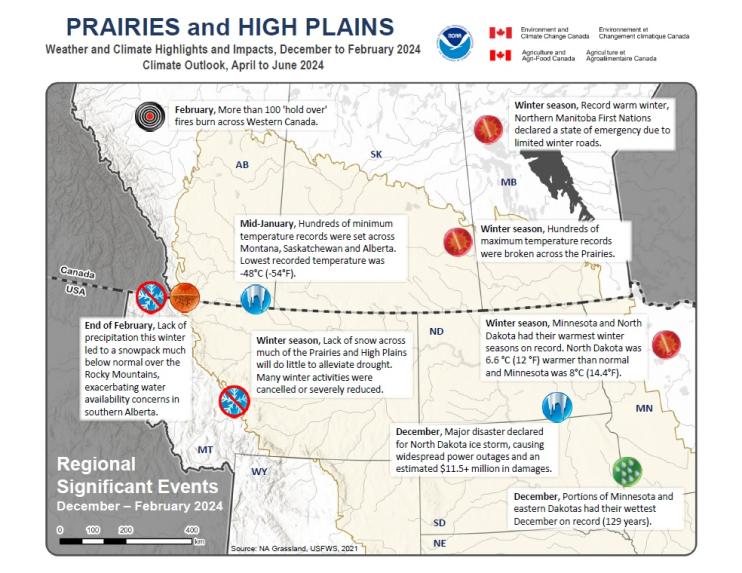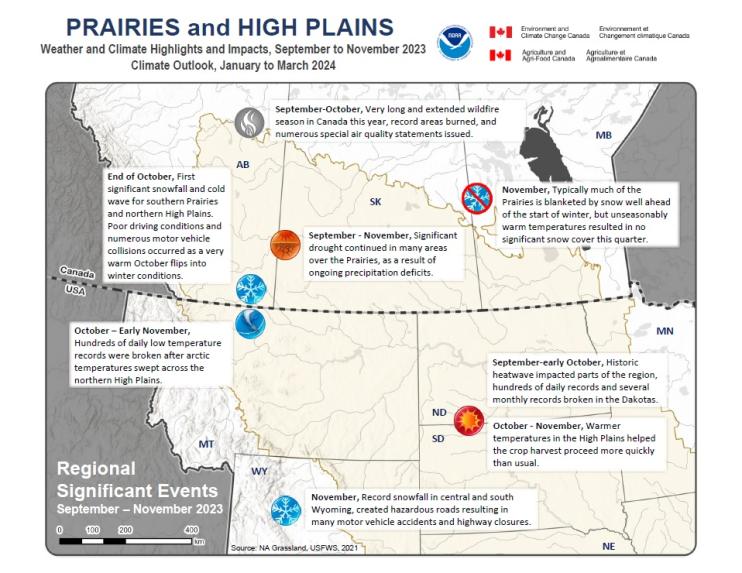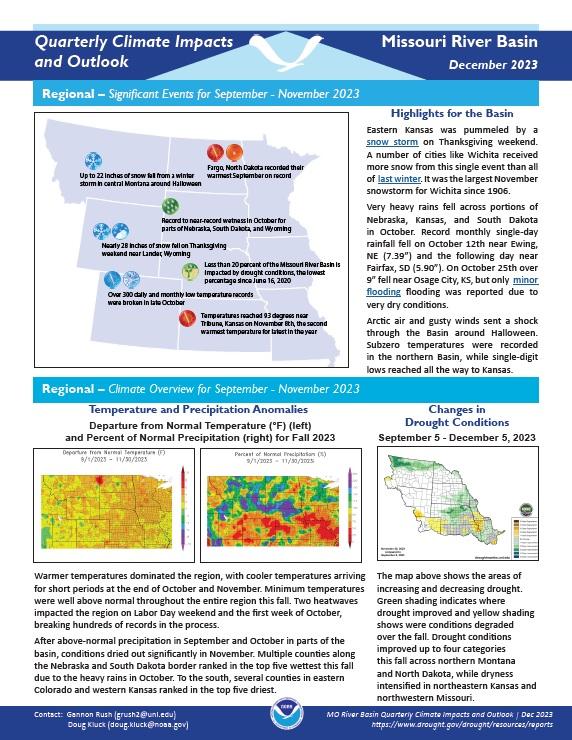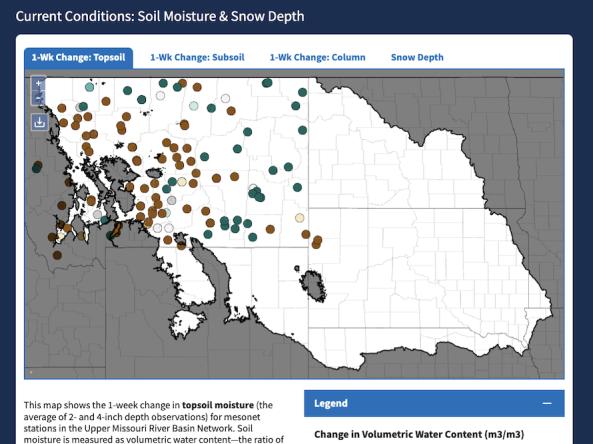For the latest forecasts and critical weather information, visit weather.gov.
Quarterly Climate Impacts and Outlook for the Missouri River Basin for December 2023–February 2024. Dated March 2024.
In typical El Niño fashion, temperatures were well above normal for the region. North Dakota recorded its warmest winter on record, while the majority of the region ranked in the top 5. Precipitation was above normal for the southern and eastern parts of the basin, while the northwestern portions were below normal.
Quarterly Climate Impacts and Outlook for the Canadian and U.S. Prairies and High Plains for December 2023–February 2024, with an outlook for April–June 2024. Dated March 2023.
The Prairies and High Plains saw warmer than normal temperatures, with the eastern half notably warmer than the rest of the region. Much drier than normal conditions were observed across the region in the bordering states and provinces, including inland areas such as the northern Prairies, parts of Montana, Wyoming, and the Dakotas.
Quarterly Climate Impacts and Outlook for the Canadian and U.S. Prairies and High Plains for September–November 2023, with an outlook for January–March 2024. Dated December 2023.
The Prairies and High Plains generally experienced warmer fall conditions, except the area that borders Montana and the Dakotas. Precipitation was well below normal for much of the Prairies, with parts of central Alberta receiving less than 30% of its seasonal amount.
Quarterly Climate Impacts and Outlook for the Missouri River Basin for September–November 2023. Dated December 2023.
Warmer temperatures dominated the region, with cooler temperatures arriving for short periods at the end of October and November. Minimum temperatures were well above normal throughout the entire region this fall. After above-normal precipitation in September and October in parts of the basin, conditions dried out significantly in November.








